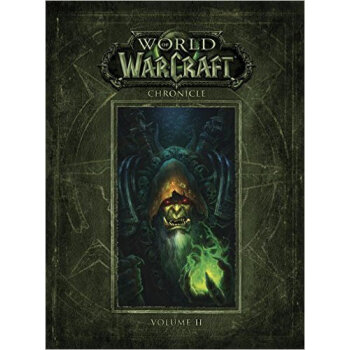![Jerusalem: The Biography 耶路撒冷三千年 英文原版 [平装]](https://pic.tinynews.org/19225318/552338f4Nd184190e.jpg)

具体描述
编辑推荐
读《耶路撒冷三千年》,了解真实的耶路撒冷,就会明白世界为何演变成今天的模样。耶路撒冷曾被视为世界的中心,是基督教、犹太教和伊斯兰教三大宗教的圣地,是文明冲突的战略要冲,是让世人魂牵梦绕的去处,是惑人的阴谋、虚构的网络传说和二十四小时新闻发生的地方。作者西蒙·蒙蒂菲奥里依年代顺序,以三大宗教围绕“圣城”的角逐,以几大家族的兴衰更迭为主线,生动讲述了耶路撒冷的前世今生;作者通过大量的田野调查和文献考据,以客观、中立的角度,透过士兵与先知、诗人与国王、农民与音乐家的生活,以及创造耶路撒冷的家族来呈现这座城市的三千年瑰丽历史,还原真实的耶路撒冷……
内容简介
Jerusalem is the universal city, the capital of two peoples, the shrine of three faiths; it is the prize of empires, the site of Judgement Day and the battlefield of today’s clash of civilizations. From King David to Barack Obama, from the birth of Judaism, Christianity and Islam to the Israel-Palestine conflict, this is the epic history of three thousand years of faith, slaughter, fanaticism and coexistence. ? How did this small, remote town become the Holy City, the “center of the world” and now the key to peace in the Middle East? In a gripping narrative, Simon Sebag Montefiore reveals this ever-changing city in its many incarnations, bringing every epoch and character blazingly to life. Jerusalem’s biography is told through the wars, love affairs and revelations of the men and women—kings, empresses, prophets, poets, saints, conquerors and whores—who created, destroyed, chronicled and believed in Jerusalem. As well as the many ordinary Jerusalemites who have left their mark on the city, its cast varies from Solomon, Saladin and Suleiman the Magnificent to Cleopatra, Caligula and Churchill; from Abraham to Jesus and Muhammad; from the ancient world of Jezebel, Nebuchadnezzar, Herod and Nero to the modern times of the Kaiser, Disraeli, Mark Twain, Lincoln, Rasputin, Lawrence of Arabia and Moshe Dayan. ? Drawing on new archives, current scholarship, his own family papers and a lifetime’s study, Montefiore illuminates the essence of sanctity and mysticism, identity and empire in a unique chronicle of the city that many believe will be the setting for the Apocalypse. This is how Jerusalem became Jerusalem, and the only city that exists twice—in heaven and on earth.From the Hardcover edition.作者简介
Simon Sebag Montefiore read history at Cambridge University. His books have been published in more than thirty-five languages. Potemkin: Catherine the Great’s Imperial Partner was short-listed for the Samuel Johnson, Duff Cooper and Marsh Biography prizes in Britain. Stalin: The Court of the Red Tsar was awarded the History Book of the Year Prize at the British Book Awards. Young Stalin won the Los Angeles Times Book Prize for Biography, the Costa Biography Award (U.K.), le Grand Prix de la biographie politique (France) and the Bruno Kreisky Prize for Political Literature (Austria). A Fellow of the Royal Society of Literature, Montefiore lives in London with his wife, the novelist Santa Montefiore, and their two children.精彩书评
Jackson Diehl …sweeping and absorbing…a master of colorful and telling details and anecdotes…Montefiore's account is admirably dispassionate and balanced… —The Washington Post Jonathan Rosen In Jerusalem: The Biography, Simon Sebag Montefiore unleashes so many kings, killers, prophets, pretenders, caliphs and crusaders, all surfing an ocean of blood, that the reader may begin to long for redemption, not from the book, which is impossible to put down, but from history itself…Montefiore…has a fine eye for the telling detail, and also a powerful feel for a good story—so much so that his vastly enjoyable chronicle at times has a quasi-mythic aspect. —The New York Times Book Review Fewer Reviews Publishers Weekly Popular historian Montefiore (Stalin: The Court of the Red Tsar) presents a panoramic narrative of Jerusalem, organized chronologically and delivered with magisterial flair. Spanning eras from King David to modern Israel with rich anecdotes and vivid detail, this exceptional volume portrays the personalities and worldviews of the dynasties and families that shaped the city throughout its 3,000-year history. Montefiore explains how religious and political influences created the city’s character, while fostering its stature as a center of the Western religious world. He effectively demonstrates how political necessity stimulated and inspired religious devotion and how the portrayal of Jerusalem as a holy city sacred to three religions is relatively recent. Chapters are organized by epochs: Judaism, paganism, Christianity, Islam, Crusade, Mamluk, empire, and Zionism, with the body of the book ending with the Six-Day War. A balanced epilogue considers Jerusalem in the context of recent events. Drawing upon archival materials, archeological findings, recent scholarship, and his own family’s papers (he is descended from the 19th-century Jewish leader Moses Montefiore), Montefiore delivers Jerusalem’s unfolding story as epic panorama and nuanced documentary history, suitable for general and scholarly audiences. Photos and maps. (Oct.) Library Journal Few historians have demonstrated the vision, mastery, and boldness necessary to publish on a subject so vast and in such detail as Montefiore (Stalin: The Court of the Red Tsar). Since Jerusalem's origins as a settlement more than 5000 years ago, its history, in the author's citation of 19th-century British prime minister Benjamin Disraeli, is "the history of the world." Montefiore explains the city's significance to the three Abrahamic faiths, the idiosyncrasies of its builders and conquerors, and the persistent perception there of a "divine presence." Montefiore starts with King David (he takes the Old Testament as the historical source), gets to the "quixotic and risky but pious" Crusades about halfway through the book, and goes on to note such "pilgrims" as Rasputin and Mark Twain. He confronts challenging questions, including the destruction of the Temple at the hands of Nebuchadnezzar in 586 B.C.E. and by Titus in 70 C.E. and the remarkable "Dome of the Rock," and he moves onward to the creation of modern Israel. VERDICT A marvelous panorama for all readers with an interest in religious studies or world history. [See Prepub Alert, 4/4/11.]—Zachary T. Irwin, Pennsylvania State Univ.-Erie Kirkus Reviews The sanguinary story of thousands of years of conflict in the home city of religions. Perhaps it's impossible to write disinterested history, but Montefiore (Young Stalin, 2007, etc.) endeavors to do so—and largely succeeds. The author sees Jerusalem not just as the setting for some of history's most savage violence—some of the butchery makes Titus Andronicus look like a Sesame Street segment—but a microcosm of our world. Our inability to achieve sustained peace there is emblematic of our failures around the globe. Montefiore begins in 70 CE with the assault of the Roman leader Titus (not Andronicus) on Jerusalem, an attack featuring thousands of crucifixions of Jews—not to mention eviscerations to extract from the bowels of the victims the valuables they'd swallowed. The author then retreats to the age of the biblical David, and away we go, sprinting through millennia, pausing only for necessary explanations of politics, religion, warfare and various intrigues. The story is horribly complex, and Montefiore struggles mightily to make everything clear as well as compelling, but the vast forest of names, places, events sometimes thoroughly conceals some small treasure at its heart. Still, the history is here: Nebuchadnezzar, the Herods, Alexander the Great, Jesus, Pilate, Caligula, Paul, Titus, Justinian, the Arabs and the Muslims, the Crusades, Richard the Lionheart, Saladin, Suleiman, Ottomans, Napoleon, Disraeli, Lawrence of Arabia, Zionism. There are even some guest appearances by Thackeray, Twain and Melville. Suddenly, we are in the 20th century, and only the names and the killing technology have changed. The author ends with the 1967 Six-Day War and with some speculations about the future. An essential text, bathed in blood, lit with faint hope.用户评价
《耶路撒冷:三千年》这本书,初拿到手,厚重感就扑面而来,让我对它承载的历史有了初步的敬畏。我一直对这个充满传奇色彩的城市心向往之,总觉得它身上带着一种独特的、难以言说的神秘气息。这本书的封皮设计简洁大气,很有质感,这往往是一个好故事的开端,也让我更加期待它能带我进入那个遥远而又fascinating的过去。我喜欢这样能够触及心灵的书籍,它不仅仅是文字的堆砌,更像是打开了一扇通往另一个时空的大门。翻开书页,那熟悉的字体排版,读起来非常舒服,没有那种压迫感,让人能心平气和地去吸收那些厚重的历史信息。我特别欣赏作者在细节上的打磨,我相信一部好的历史著作,离不开对每一个细枝末节的精心梳理和呈现,这样才能让历史活起来,让读者感受到那个时代的脉搏。这本书,从名字上看,就有一种宏大的叙事感,仿佛一部史诗即将展开。我希望它能带领我穿越时光的迷雾,去探寻这座城市的起源、发展、兴衰,去理解它为何能成为如此重要的精神象征。我个人非常注重阅读的体验,这本书在装帧上的考究,无疑为我的阅读体验奠定了良好的基础,让人从拿到书的那一刻起,就充满了期待,准备好沉浸其中,进行一场知识与情感的双重洗礼。
评分《耶路撒冷:三千年》这本书,给我最大的惊喜在于其叙事的方式。历史著作往往容易变得枯燥乏味,尤其是当涉及到大量年代、地名和事件时。我非常期待这本书能够打破这种刻板印象,用一种引人入胜、充满故事性的方式来讲述耶路撒冷的故事。我喜欢那种能够将复杂史料化繁为简,并且赋予其生命力的写作风格。如果作者能够像一位说书人一样,用生动的语言,将那些古老的传说、残酷的战争、神圣的仪式娓娓道来,那绝对是一场阅读的盛宴。我曾经读过一些历史书,虽然内容扎实,但读起来却像在嚼蜡,让人提不起兴趣。而这本书,从它吸引人的标题和封面设计,我就预感到它会有所不同。我希望它能运用一些巧妙的叙事技巧,比如从某个重要事件切入,或者以一个普通人的视角去观察历史的变迁,这样才能让读者更容易产生代入感。我期待的不仅仅是知识的获取,更是阅读过程中的愉悦和沉浸。我相信,一个好的历史故事,应该能够让读者在掩卷之后,仍然回味无穷,仿佛亲身经历过那一切。
评分读《耶路撒冷:三千年》这本书,最让我着迷的莫过于它所描绘的那些鲜活的人物群像。历史长河中,总有那么一些闪耀的名字,他们的决策、他们的信仰、他们的挣扎,深刻地塑造了我们今天所见的这个世界。我特别期待作者能够将这些历史人物立体化,让他们不再是教科书上冰冷的名字,而是有血有肉、有情感、有欲望的个体。我想知道,在那些重大的历史转折点,他们是如何思考的?在信仰与权力、战争与和平的冲突中,他们是如何抉择的?这本书的标题“三千年”,本身就暗示了时间的跨度之大,而在这漫长的岁月中,一定涌现出无数值得我们去了解、去探究的人物。我希望作者能够运用其深厚的功底,将那些宏大的历史事件与个人的命运巧妙地结合起来,让读者在感受历史洪流的同时,也能窥见那些身处其中的个体所经历的喜怒哀乐。我常常觉得,理解历史,最终还是要回到理解人。这本书,如果能做到这一点,我想它就不仅仅是一本历史书,更是一部关于人性的深刻解读。我期望它能让我对那些叱咤风云的人物有更深入的认识,甚至产生一种穿越时空的共鸣,仿佛置身于那个时代,与他们一同经历那些波澜壮阔的岁月。
评分《耶路撒冷:三千年》这本书,在内容方面,我最感兴趣的部分莫过于它对于“三千年”这个时间维度的具体呈现。这三个千年,足以涵盖无数的王朝更迭、信仰演变、文明碰撞,甚至地貌的变迁。我非常好奇作者是如何将如此漫长而又复杂的历史压缩在一本书中的,又是如何找到其中的逻辑和线索,让读者能够清晰地把握住历史的脉络。我期待它能够呈现出这种历史的连续性,比如某个古老的习俗是如何传承下来,某个宗教的影响是如何逐渐渗透,某个建筑是如何在历代变迁中被赋予新的意义。我希望它不仅仅是对历史事件的罗列,更能展现出一种历史的深度和广度,让我看到不同时代的人们是如何生活、如何思考、如何与这座城市互动。我特别喜欢那种能够展现出文化和文明之间微妙联系的书籍,希望这本书能在这一点上做得出色。我希望在读完这本书之后,我能够对“时间”这个概念有新的认识,能够体会到历史的厚重感,并且理解这座城市是如何在岁月的洗礼中不断地被塑造和重塑的,最终成为今天这样一个独一无二的存在。
评分对于《耶路撒冷:三千年》这本书,我有一个非常个人化的期待,那就是它能够帮助我理解这座城市之所以能够成为焦点的原因。耶路撒冷,不仅仅是一个地理名词,它更是一个充满象征意义的存在,承载着三大宗教的信仰,也因此成为了冲突与和平的交汇点。我希望这本书能够深入挖掘这座城市在不同历史时期扮演的角色,以及它如何演变成今天我们所看到的样子。我不仅仅想了解它的政治和军事历史,更想了解它的文化、宗教、艺术以及人民的生活。这座城市究竟有哪些独特的魅力,让它历经千年而不衰,反而越发显得重要?我期待作者能够梳理清楚那些错综复杂的宗教、民族、政治关系,并且以一种清晰易懂的方式呈现出来。我希望通过阅读这本书,我能够对耶路撒冷有更深层次的理解,不再仅仅停留在新闻报道中的片段,而是能够看到它完整的、立体的面貌。我希望它能解答我心中关于这座城市的种种疑惑,让我明白,为什么它会如此牵动人心,为什么它会引发如此多的故事和传说。
评分还没看,质量是不错的,正版的,上帝祝福以色列!
评分过年的精神食粮,希望这些大餐美味可口!
评分吾已消费京东数年,深知各产品琳琅满目。然,唯此宝物与众皆不同, 为出淤泥之清莲。使吾为之 动容,心驰神往。乃至饭不能食,寝则不安,辗转反侧 无法忘怀。于是乎紧衣缩食,凑齐银两,倾吾所能而买。强哥之热心与快递员之殷切让人感染,感激怜涕。打开包裹之时,顿时金光四射,屋内升起七彩祥云,处处都是祥和之气。吾惊讶之余更是欣喜若狂,呜呼哀哉!此宝乃是天上物,人间又得几回求!遂沐浴更衣, 焚香祷告后与家人共赏此宝。妻则赞叹不已,不仅赞叹此宝物款型及做工,超高性价比!且赞吾独具慧眼与时尚品位,更予红唇相赠。 产品介绍果然句句实言,毫无夸大欺瞒之嫌。此属大家风范,忠义之商贾。
评分正好京东有活动,这算下来3.5折多一点,很合适,书还没有看,但是很感兴趣
评分京东图书价格便宜,包装也很结实
评分趁活动买的 送货上门 价格便宜 京东买书就是好
评分京东活动很给力,基本上每次看到购物车的书参加满减,立马入手,很划算,都是二折到三点五折,这个价格区间还是很不错的。支持京东,期待2018年书香节,618的促销。准备剁手吧。准备好吃土了。
评分为了世界十分之九的美在耶路撒冷,就要去寻找,好书介绍一个城市的历史,领略世界缩影,好书。
评分非常不错的一套书哦,朋友很满意,会一如既往地支持京东图书
相关图书
本站所有内容均为互联网搜索引擎提供的公开搜索信息,本站不存储任何数据与内容,任何内容与数据均与本站无关,如有需要请联系相关搜索引擎包括但不限于百度,google,bing,sogou 等
© 2025 book.tinynews.org All Rights Reserved. 静思书屋 版权所有

![The Black Swan 黑天鹅:如何应对不可预知的未来 英文原版 [平装] pdf epub mobi 电子书 下载](https://pic.tinynews.org/19016952/d794293f-d4c8-4313-be4f-8cc62c8d021e.jpg)
![How Machines Work: Zoo Break! 英文原版 [精装] [6-9岁] pdf epub mobi 电子书 下载](https://pic.tinynews.org/130000002870/58aa492bNeb81be04.jpg)
![My Very First Library Board book 我的第一个图书馆 英文原版 [平装] [1岁及以上] pdf epub mobi 电子书 下载](https://pic.tinynews.org/19043678/rBEhWlKVzw4IAAAAAAB4rIJRdlQAAGBRQPTeNEAAHjE653.jpg)
![My First Dictionary 英文原版 [精装] [5岁及以上] pdf epub mobi 电子书 下载](https://pic.tinynews.org/19136075/rBEGDFDFWsoIAAAAAAIlWt6_mpsAAA5hQFIvvwAAiVy230.jpg)
![My First Reading Library 我的第一个图书馆套装,共50册 英文原版 [平装] [4岁及以上] pdf epub mobi 电子书 下载](https://pic.tinynews.org/19469079/5551560bN83c3932a.jpg)
![My Reading Library我的第二个图书馆套装(共50册) 英文原版 [平装] [4岁及以上] pdf epub mobi 电子书 下载](https://pic.tinynews.org/19502100/54990a02N2c4d96bf.jpg)
![The Usborne Reading Collection 40 books我的第三个图书馆套装(共40册) 英文原版 [平装] pdf epub mobi 电子书 下载](https://pic.tinynews.org/19542784/55b5a199N7d0043e7.jpg)
![我的第一个图书馆套装 my first library 非常饥饿的毛毛虫 京东独家套装 [平装] pdf epub mobi 电子书 下载](https://pic.tinynews.org/130000067067/5acc7fd5N0969713a.jpg)
![THE OCTONAUTS 海底小纵队5本套装 [平装] pdf epub mobi 电子书 下载](https://pic.tinynews.org/130000067233/5ad5c16fN1b919317.jpg)
![Robinson鲁滨逊 [精装] pdf epub mobi 电子书 下载](https://pic.tinynews.org/130000079146/5afcfa53N7e16050a.jpg)

![S Ship of Theseus 希修斯之船 英文原版 [平装] pdf epub mobi 电子书 下载](https://pic.tinynews.org/19479496/5461809fNd5433413.jpg)
![Charlotte's Web夏洛的网 英文原版 [平装] [7-10岁] pdf epub mobi 电子书 下载](https://pic.tinynews.org/19004840/5a266fceNe5000052.jpg)
![World of Warcraft Chronicle 魔兽世界编年史 英文原版 [平装] pdf epub mobi 电子书 下载](https://pic.tinynews.org/19610546/575788d3N4670be08.jpg)

![创京东 英文原版 The JD.com Story: An E-commerce Phenomenon [平装] pdf epub mobi 电子书 下载](https://pic.tinynews.org/19768599/5821822dN226cdae7.jpg)
![Game of Thrones Boxed Set Special Edition 权力的游戏 限量版 全球限量1000 套 英文原版 [平装] pdf epub mobi 电子书 下载](https://pic.tinynews.org/130000066779/5993da34N9577edd5.jpg)
![To Kill A Mockingbird[杀死一只知更鸟] [平装] pdf epub mobi 电子书 下载](https://pic.tinynews.org/19045957/583eaa28N0c743397.jpg)
![Emotional Intelligence 情商: 它为什么比智商更重要 [平装] pdf epub mobi 电子书 下载](https://pic.tinynews.org/19041755/95a658ad-e2d5-4e43-8a89-9252404eef66.jpg)
![84 Charing Cross Road 查令十字街84号 英文原版 [平装] [查令十字街84号] pdf epub mobi 电子书 下载](https://pic.tinynews.org/19148563/57280410N1770f842.jpg)